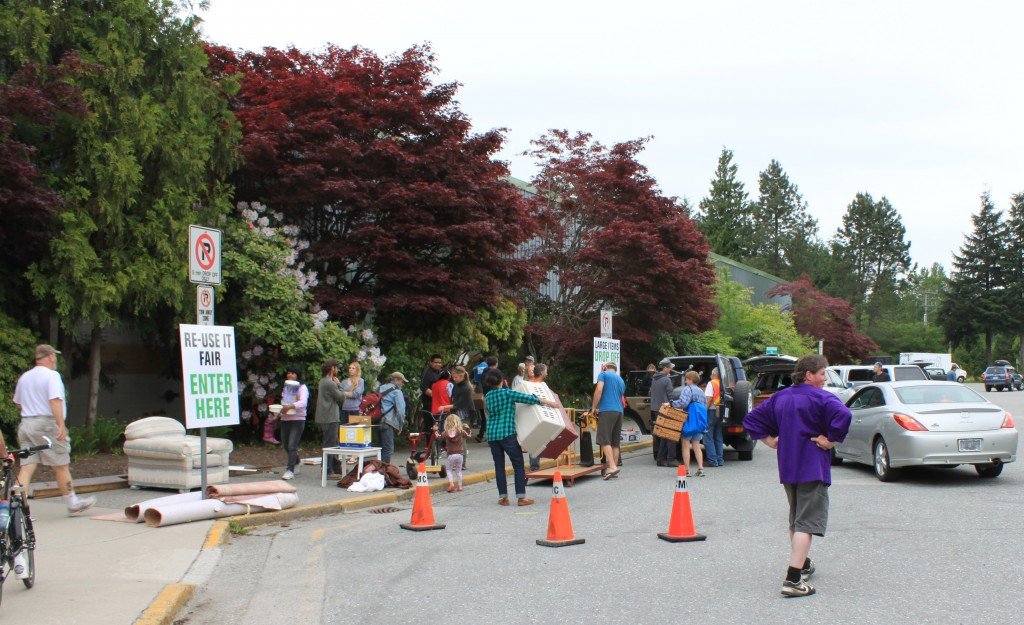
Photo: District of Squamish
By Gagandeep Ghuman
Published: Dec 7, 2013
Generating mounds of waste destined for landfill is a Canadian universal, but Squamish is worse than Anytown Canada, although we are getting better.
Consider this: In 2008, Squamish generated 1,100 kg per capita.
“We want to promote the thinking that nothing is a waste, and everything is a resource.” Rod MacLeod.
Per capita disposal rate, according to Government of BC, is an estimate of how many kilograms of solid waste one person sends to a landfill or other disposal site in a given year.
It does not include waste that is reused or recycled.
To put the Squamish numbers in perspective, Canada produced 777 kg per capita of municipal waste in 2008.
Squamish was far ahead of Canadians in generating waste, but take heart, we are getting better at this.
In merely five years, despite the population increase, Squamish has reduced the waste being generated to 630 kg per capita, according to director of engineering Rod MacLeod.
This is a quite an achievement, considering how a few years ago the district was hoping to reduce waste generation to 800 kg by 2015.
“We have achieved the goal in remarkable way,” said MacLeod.
Policy change and incentives to send less waste to the landfill, and education to reduce, recycle, and reuse played a crucial role in Squamishers reducing waste generation, he said.
For policy change, the district reduced garbage collection to every two weeks. As an incentive, it also introduced curbside collection of recycles in 2009.
It also introduced a variable landfill tipping fee, a punitive measure that also doubles up as an incentive to generate less waste.
Now, people going to landfill to dump stuff have to pay $108 a ton, up from $80 a ton.
At the same the district also lowered the tipping fee down to $70 a tonne for “dirty” wood that is now chipped and taken to the Port Mellon mill and burned to generate electricity
Some household items like computers and TV are now being recycled instead of being dumped in the landfill.
The council also passed a motion to offer incentive to construction industry to sort out recycled material from any construction waste they bring to the landfill.
If it’s sorted, you pay only $40 a tonne; if not, then it’s $216. A similar program for grocery stores is also underway.
“That program has worked very well, clean wood goes to Whistler and the one that can’t be composted goes to Port Mellon,” MacLeod said.
Now, the district is setting newer, more ambitious targets. In 10 years, we will decrease by 90 per cent of what we are currently producing, says MacLeod.
“We want to promote the thinking that nothing is a waste, and everything is a resource,” he said.


Jonathan says
Quote:
“In merely five years, despite the population increase, Squamish has reduced the waste being generated to 630 kg per capita, according to director of engineering Rod MacLeod.”
Why does Mr. MacLeod think that population growth affects the amount of waste generated per person?
Stephane Perron Mr. says
I think Squamish needs to update its work site waste diversion policies. Every work site should be required to have a metal bin, a cardboard bin, a plastic bin, a hazardous material bin, and a rebuild-it centre bin. With the development of the waterfront and other large scale develop ment we need to think more about the tremendous amount of waste generated by the construction industry.
Dave says
Any household or business, of any kind, that is not obviously making an effort to re-cycle should be denied waste collection service and/or be penalized in an appropriate manner. And this should be backed up with a workable bylaw. Metro is not squeamish in this regard and we are a fast growing population. so let’s get on with it!